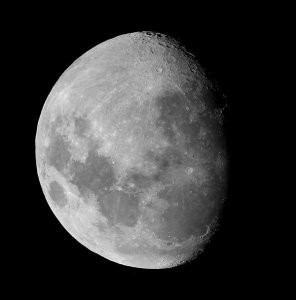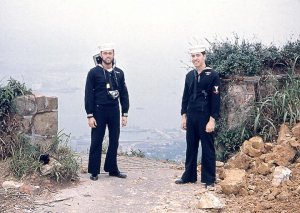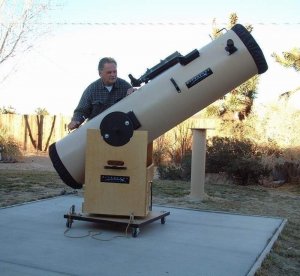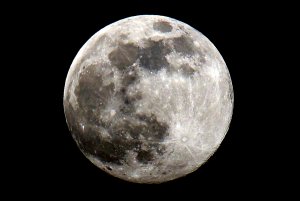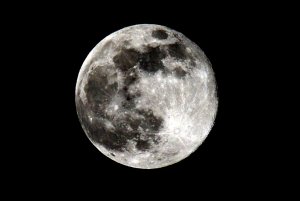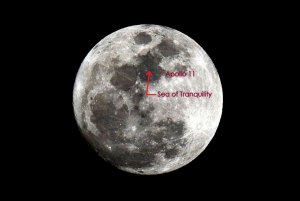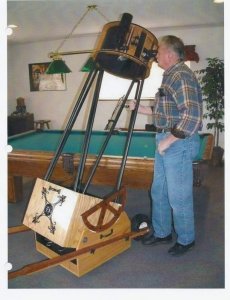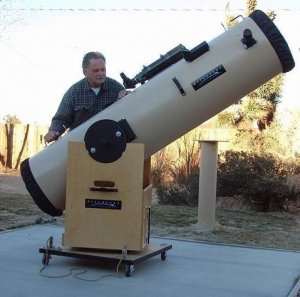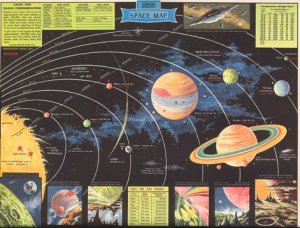Grampa Don
Yep, that's me
- Location
- Orange county, Calif.
A couple years ago, I bought a small telescope on Craig's list. Then I did some research and started scanning the sky on clear evenings. I enjoyed it so much that a few months later I bought larger scope. And, about six months after that I bought an even bigger one. This one is as big as I can handle. I have it on wheels so I can roll it out into the driveway and start observing.
I've found it to be a very relaxing hobby, just me, the sky, and the scope. In cold weather, I have hand warmers in my jacket pockets, and in warm weather I'm smeared with mosquito repellent.
My sky is very bright from light pollution, so many dim objects like nebulae and galaxies are invisible even with a large scope. With the naked eye I may be only able to see a few stars. But, there are still a lot of pretty things through a telescope. I've seen all the planets (don't count Pluto), several asteroids, two comets, many multiple stars and star clusters, and a few galaxies and nebulae. And, the moon is amazing seen close up, with all kinds of geologic features.
Planets and clusters can be very pretty, but a lot of the pleasure is mental. A while back, I looked at a galaxy that is 30 million light years from us. It was just a tiny dim fuzzy patch of light. But in my mind's eye I knew it was a collection of billions of suns. And the photons that were hitting my retina had been traveling through intergalactic space from those suns for 30 million years. It wasn't a picture, it was the real thing. I stared at it for quite a while.
Don
I've found it to be a very relaxing hobby, just me, the sky, and the scope. In cold weather, I have hand warmers in my jacket pockets, and in warm weather I'm smeared with mosquito repellent.
My sky is very bright from light pollution, so many dim objects like nebulae and galaxies are invisible even with a large scope. With the naked eye I may be only able to see a few stars. But, there are still a lot of pretty things through a telescope. I've seen all the planets (don't count Pluto), several asteroids, two comets, many multiple stars and star clusters, and a few galaxies and nebulae. And, the moon is amazing seen close up, with all kinds of geologic features.
Planets and clusters can be very pretty, but a lot of the pleasure is mental. A while back, I looked at a galaxy that is 30 million light years from us. It was just a tiny dim fuzzy patch of light. But in my mind's eye I knew it was a collection of billions of suns. And the photons that were hitting my retina had been traveling through intergalactic space from those suns for 30 million years. It wasn't a picture, it was the real thing. I stared at it for quite a while.
Don


